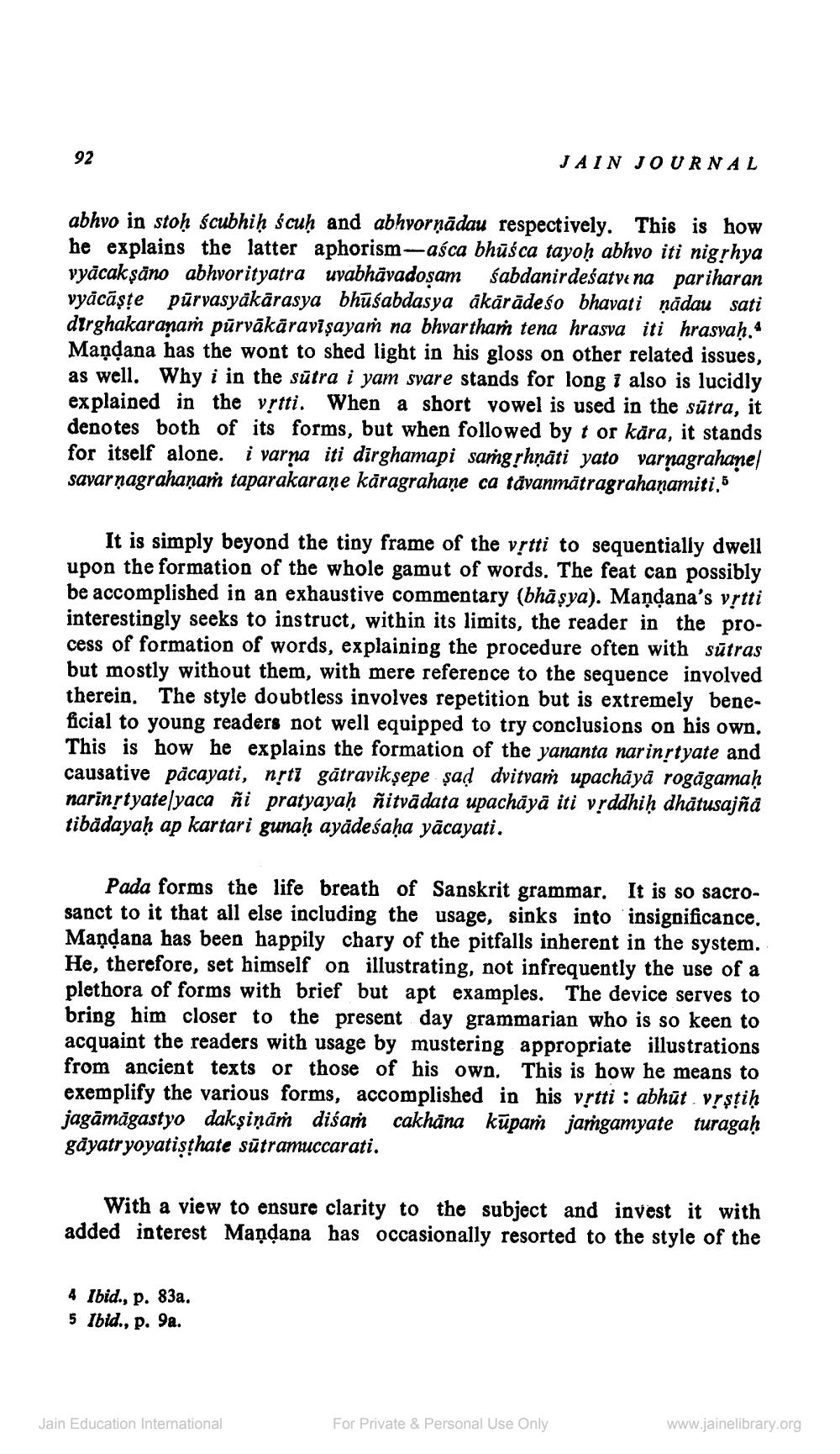________________
JAIN JOURNAL
abhvo in stoḥ ścubhiḥ ścuḥ and abhvorņādau respectively. This is how he explains the latter aphorism-asca bhūśca tayoḥ abhvo iti nigrhya vyacak şāno abhvorityatra uvabhāvadosam sabdanirdeśatve na pariharan vyācāşte pūrvasyäkārasya bhūśabdasya akārādeso bhavati nädau sati dirghakaranaṁ pārvākāravişayaṁ na bhvarthaí tena hrasva iti hrasvaḥ. 4 Maņdana has the wont to shed light in his gloss on other related issues, as well. Why i in the sutra i yam svare stands for long i also is lucidly explained in the yrtti. When a short vowel is used in the sūtra, it denotes both of its forms, but when followed by t or kāra, it stands for itself alone. i varna iti dirghamapi sarg shạäti yato varnagrahanel savarṇagrahaņaṁ taparakarane kāragrahaņe ca tävanmätragrahanamiti,5
It is simply beyond the tiny frame of the yrtti to sequentially dwell upon the formation of the whole gamut of words. The feat can possibly be accomplished in an exhaustive commentary (bhāsya). Maņdana's yrtti interestingly seeks to instruct, within its limits, the reader in the process of formation of words, explaining the procedure often with sūtras but mostly without them, with mere reference to the sequence involved therein. The style doubtless involves repetition but is extremely beneficial to young readers not well equipped to try conclusions on his own. This is how he explains the formation of the yananta narinrtyate and causative păcayati, nști gātravikṣepe șad dvitvam upachāyā rogāgamaḥ narinstyate|yaca ñi pratyayaḥ ñitvādata upachāyā iti vrddhiḥ dhātusajña tibadayaḥ ap kartari gunaḥ ayādeśaḥa yācayati.
Pada forms the life breath of Sanskrit grammar. It is so sacrosanct to it that all else including the usage, sinks into insignificance. Mandana has been happily chary of the pitfalls inherent in the system. He, therefore, set himself on illustrating, not infrequently the use of a plethora of forms with brief but apt examples. The device serves to bring him closer to the present day grammarian who is so keen to acquaint the readers with usage by mustering appropriate illustrations from ancient texts or those of his own. This is how he means to exemplify the various forms, accomplished in his vrtti : abhūt vrstiḥ jagāmāgastyo dakşiņāṁ diśam cakhāna kūpaṁ jamgamyate turagaḥ gayatryoyatişțhate sūtramuccarati.
With a view to ensure clarity to the subject and invest it with added interest Maņdana has occasionally resorted to the style of the
4 Ibid., p. 83a. 5 Ibid., p. 9a.
Jain Education International
For Private & Personal Use Only
www.jainelibrary.org




